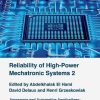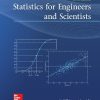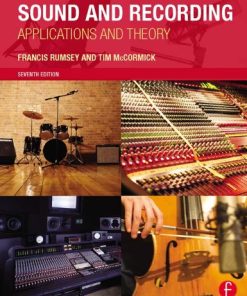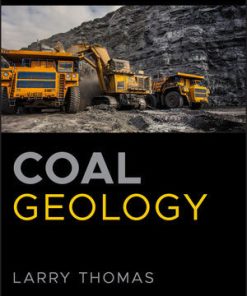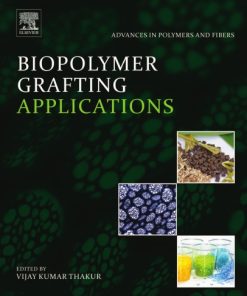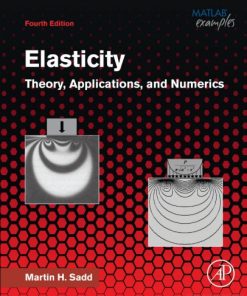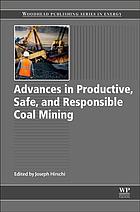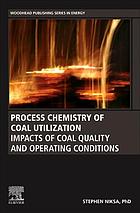(Ebook PDF) Coal Bed Methane Theory and Applications 1st edition by Pramod Thakur 0128165421 9780128165423 full chapters
$50.00 Original price was: $50.00.$25.00Current price is: $25.00.
Coal Bed Methane: Theory and Applications 1st edition by Pramod Thakur – Ebook PDF Instant Download/DeliveryISBN: 0128165421, 9780128165423
Full dowload Coal Bed Methane: Theory and Applications 1st edition after payment.
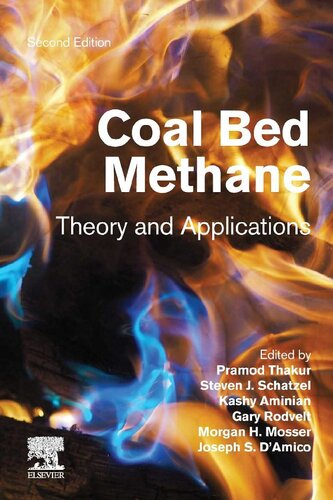
Product details:
ISBN-10 : 0128165421
ISBN-13 : 9780128165423
Author: Pramod Thakur
Coal Bed Methane: Theories and Applications, Second Edition, captures the full lifecycle of a coal bed methane well and offers petroleum geologists and engineers a single source for a broad range of coal bed methane (CBM) applications. The vast coal resources in the United States continue to produce tremendous amounts of natural gas, contributing to a diverse range of energy assets. This book addresses crucial technical topics, including exploration and evaluation of coal bed reservoirs, hydraulic fracturing of CBM wells, coal seam degasification, and production engineering and processing, among others.
Coal Bed Methane: Theory and Applications 1st Table of contents:
Section A: Origin, geology, and reserve for CBM reservoirs
1a: The origin of coalbed methane
Abstract
1a.1 Introduction
1a.2 Origins of coalbed methane
1a.3 Conclusions
1b Addendum: The origin of gas in coal and shale
2: Geology of North American coalbed methane reservoirs
Abstract
2.1 Introduction
2.2 Geologic factors
2.3 Summary and conclusions
3a: United States Lower 48 coalbed methane—Benchmark (2010)
Abstract
3a.1 Introduction
3a.2 Production
3a.3 What the data suggest
3a.4 Future trend
Appendix A: Basin/play area summaries
Appendix B: Basin/play area zero-time analyses
Appendix C: Basin/play area production distributions
3b Addendum: Prominent CBM coal fields
Section B: CBM reservoir characteristics
4: Gas storage in coal
Abstract
4.1 Gas in coal
4.2 Factors affecting gas adsorption of coal
4.3 Sorption capacity measurement
4.4 Gas content measurement
5: Gas transportation in CBM reservoir
Abstract
5.1 Gas transportation in coal matrix
5.2 Gas transportation through the cleat system
5.3 Evaluation of the cleat system properties
6: Estimating the gas in place and reserves
Abstract
6.1 Initial gas in place estimation
6.2 Gas reserves
7: Material balance equation for CBM reservoirs
Abstract
7.1 MBE for gas reservoirs
7.2 MBE for CBM reservoirs
7.3 Flowing MBE for CBM reservoirs
8: Production behavior and performance predictions
Abstract
8.1 Production behavior of a CBM reservoir
8.2 Evaluation of CBM prospects
8.3 Production forecasting
9: Modeling and simulation for CBM production
Abstract
9.1 Predicting the behavior of CBM reservoirs
9.2 Reservoir simulation
9.3 CBM reservoir simulators
9.4 Sensitivity analyses
10: Enhanced CBM recovery
Abstract
10.1 Enhanced coalbed methane recovery
10.2 Modeling and simulations
Section C: Vertical wells and their applications
11: Improved wireline logging
Abstract
11.1 Improvements in wireline logs
12: Improved construction of vertical wells
Abstract
12.1 Latest drilling technology
12.2 Casing considerations
12.3 Casing attachments
12.4 Zonal isolation
12.5 Best practices for cement placement
12.6 Cement testing for optimal blend
12.7 Vertical well plug to abandon
13: Enhanced hydrofracturing
Abstract
13.1 Introduction
13.2 Completion processes
13.3 Multiple-stage access techniques
13.4 Hydraulic fracturing
13.5 Environmental responsible processes
14: Gas production and decline from vertical wells
Abstract
14.1 Unsteady-state flow
14.2 Steady-state gas production
14.3 Gas production decline
Section D: Horizontal wells and their applications
15: History and methodology of horizontal drilling
Abstract
15.1 History of horizontal drilling
15.2 Methodology of horizontal drilling
15.3 In-mine horizontal drilling
15.4 Horizontal drilling from the surface
16: In-mine horizontal drilling and applications
Abstract
16.1 Coal mine degasification
16.2 Gas production from coal seams
16.3 Oil production from shallow or depleted oil fields
16.4 Improved auger mining
16.5 Mine water disposal from one section to another across a barrier pillar
17: Horizontal drilling from surface and applications
Abstract
17.1 Mine degasification applications
17.2 Gas production from shallow coal
17.3 Gas production from deep coal seams
17.4 Gas and oil production from deep shale
18: Hydrofracturing of Horizontal Wells
Abstract
18.1 Introduction
18.2 Cased hole access and diagnostic testing
18.3 Pump-down P-n-P process
18.4 Balls and frac sleeves
18.5 Coiled tubing frac sleeves
18.6 Coil tubing and jet tool
18.7 Hydraulic fracturing
18.8 Fluid considerations
18.9 Proppant considerations
18.10 Plugging surface-to-seam laterals
18.11 Water infusion
18.12 Cement solutions
18.13 Stabilized polymer gel solutions
19: Gas production and decline for horizontal wells
Abstract
19.1 Steady-state gas production from diffusion-controlled horizontal wells
19.2 Steady-state gas flow from a pressure-controlled horizontal well
19.3 Production forecast by “specific gas production” of the coal seam
19.4 Flow of gas in a horizontal pipe
20: CO2 sequestration and underground coal gasification with horizontal wells
Abstract
20.1 CO2 sequestration
20.2 Computer modeling of CO2 sequestration
20.3 Thakur methodology for CO2 sequestering
20.4 US field project for CO2 sequestration
20.5 Underground Coal Gasification
20.6 Processing of gas produced by UCG
Section E: Production engineering for coalbed methane
21: Postfrac engineering design
Abstract
Acknowledgments
21.1 Coal gas reservoir
21.2 Coalbed completions
21.3 Well head equipment
22: Produced water management
Abstract
22.1 CBM-produced water
22.2 CBM-produced water management—Current practices
22.3 CBM-produced water treatment
23: Preliminary gas gathering and intermediate compression
Abstract
23.1 Introduction
23.2 Gathering system
23.3 Dehydration (water vapor removal)
23.4 Compression
24: Plugging of CBM wells
Abstract
Acknowledgments
24.1 Introduction
24.2 Planning the plugging of boreholes prior to mine through
24.3 Primary mediums used to plug degasification boreholes and CBM coal bed laterals
24.4 Polymer gel evolution
24.5 Chemical description of the gel
24.6 Laboratory and surface trial gel tests
24.7 Gel design for the horizontal boreholes
24.8 Gel mixing and pumping procedures
24.9 Conclusion
Section F: CBM processing and utilization
25: CBM gathering, compression, and dehydration
Abstract
25.1 Comparison of world fossil fuel reserves
25.2 Coal mine methane well types
25.3 Why coal mine methane recovery and utilization
25.4 Water (H2O) rejection
26: CBM processing with related costs
Abstract
26.1 D’Amico Technologies Corp (DTC) gas-processing plant
26.2 Carbon dioxide (CO2) rejection
26.3 Nitrogen (N2) rejection
26.4 CBM gas processing application guide
26.5 CBM feed gas impurities vs cost
26.6 Hydrogen sulfide (H2S)
27: CBM utilization with economics
Abstract
27.1 Fossil-fuel-proven reserves
27.2 Comparative thermal values of fuels
27.3 US energy consumption
27.4 Thermodynamic efficiency
27.5 Power generation
27.6 CBM to pipeline natural gas
27.7 Compressed natural gas (CNG)
27.8 Liquid natural gas (LNG)
27.9 Natural gas to liquids (GTL)
27.10 Energy sources (United States)
People also search for Coal Bed Methane: Theory and Applications 1st:
coal bed methane definition
coal bed methane gas
coal bed methane production
coal bed methane vs natural gas
coal bed methane (cbm)
You may also like…
Science (General)
Politics & Philosophy - Philosophical Positions & Movements
Uncategorized
Erotica - Fiction
Engineering
Process chemistry of coal utilization : impacts of coal quality and operating conditions


